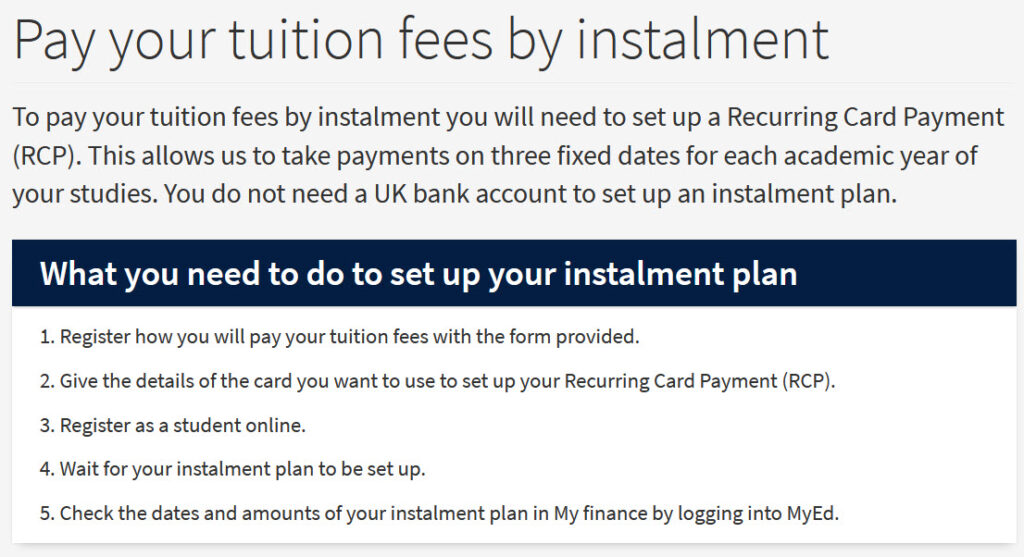Our improvements to finance content led to a 75% drop in enquiries
Over summer 2022, we worked with the Finance team to improve content on how students pay tuition fees. From August to October 2021 to the same period in 2022, the team saw a 75% drop in enquiries in the content area we were focusing on.
Project background
The Finance department approached us last year to help with their content around paying tuition fees.
Their department had been receiving thousands of enquiries from students trying to pay their fees. We worked with them on a content design project to research how staff handled enquiries and how students interacted with the current content on their site.
After assessing what the biggest problem areas were, we then went on to develop content to mitigate the issues we found in our research.
We developed two main sets of content:
- We redeveloped a form students complete to register how they pay tuition fees. This involved creating the questionnaire and help text students receive after submitting.
- We redeveloped all the surrounding content on the Finance site around how to pay tuition fees by various payment methods. Our focus was on content around how to pay tuition fees by instalment, but we did rewrite content for all other payment methods, too.
What we did
Our content redevelopment focused on paying tuition fees by instalment because this was the most popular payment method which generated the most enquiries.
From the research, we learned:
- When completing the form to register how they will pay tuition fees, students were given the same guidance, regardless of whether they had paid already or not.
- Content on paying by instalments was duplicated on the site, and there were inconsistencies between the two pages on this area.
- Students were confused by terminology used in the instalments content. For example, the link to add their card details was called ‘RCP instruction’, which students did not understand.
With these pain points in mind, we went about redeveloping the paying by instalments content:
- Our redesigned form asked students whether they had paid their fees yet or not. Depending on their answer, they were sent to tailored step-by-step guidance that told them what remaining actions, if any, they needed to complete to pay their tuition fees.
- We removed the duplicate content to ensure students were directed to only one page on paying by instalments.
- We made clearer that the term ‘RCP’ had to do with adding card details, by including one of the headings in the step-by-step instructions as ‘Enter card details to set up your Recurring Card Payment’.
Paying by instalments: see the new content we made
Register how you will pay your tuition fees: see the form we redesigned

The beginning of the page with revamped content for paying tuition fees by instalment.
The results
Four months after finishing the project, we met with the Finance team to assess the impact of our changes. They shared with us that from August to October 2021 to the same period in 2022, support calls on paying by instalment dropped by 75%.
From August to October 2021, there were 3,117 support calls on paying by instalment. For the same period in 2022, there were 792.
Overall, the Finance team mentioned how following our improvements, they were better able to meet their service level agreements regarding response times to students.
This was all happening while the University upgraded its finance systems over the summer, so it was extremely beneficial for the team to have the space to train themselves in how to use the new system, while still answering enquiries on time.
Areas to still improve
While it’s great to see this success in the priority content we worked on, there is still work to be done to improve other areas we worked on.
For example, one of the key areas the team saw issues with was around content on paying tuition fees with loans. If a loan doesn’t cover the full tuition fee, the student is responsible for paying the rest.
The team saw an increase in enquiries from students on how to pay the remaining amount. While our content improvement did address this area, there is more work to be done to test how students interact with it, so we can find out where they are having issues completing this task.
That being said, having this data is a great starting point for making improvements in future, so the team know where to prioritise their efforts.
Learn more
We’ve blogged about different aspects of this project, where you can learn more about what we did and the issues we came across.




75%? That is magnificent. Well done all.